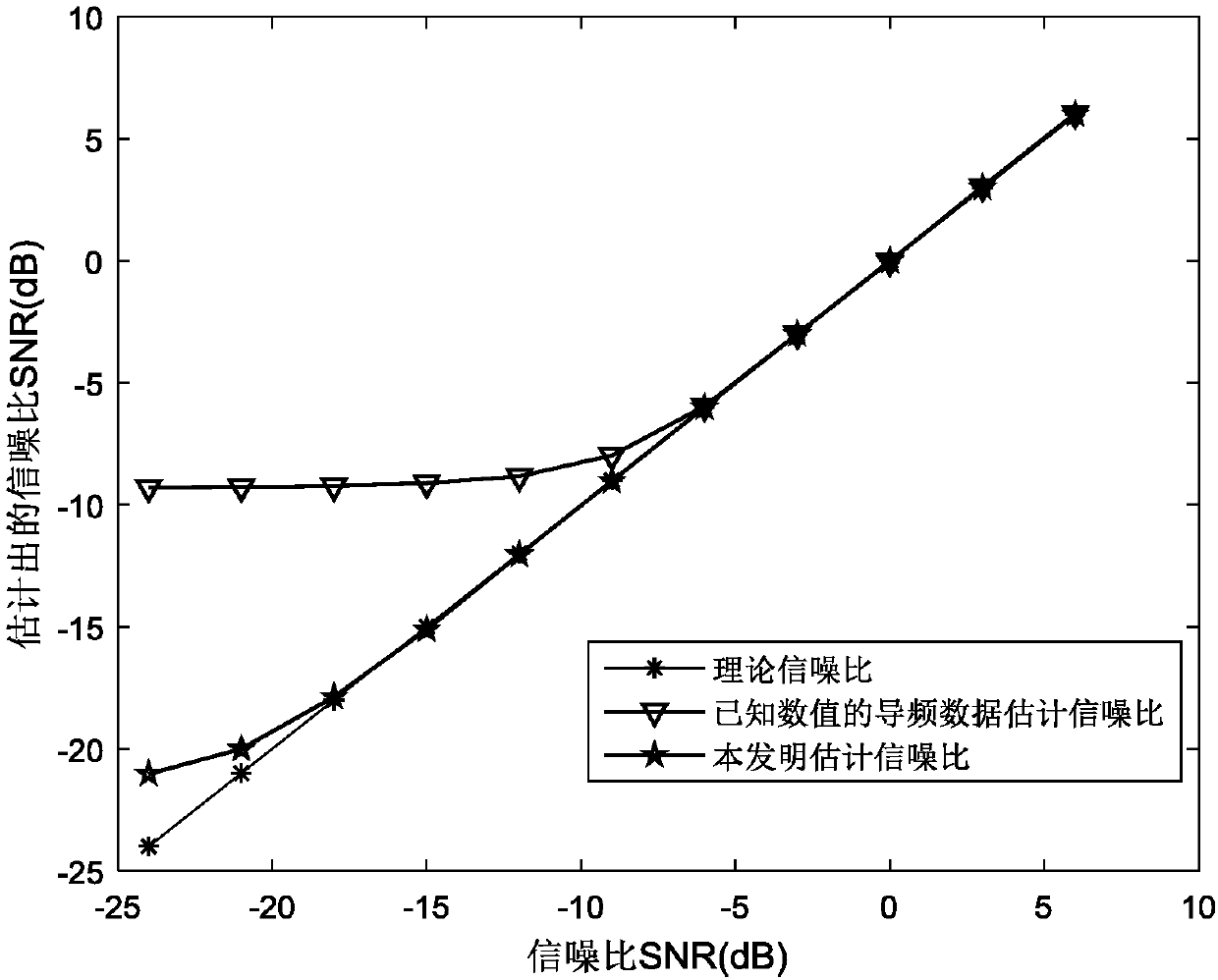Multi-user signal-to-noise ratio blind estimation method in single-carrier interleaved frequency-division multiple access (IFDMA) system
An interleaving frequency division multiple access and single-carrier technology, applied in the field of communication, can solve the problems of affecting system performance, decreasing the accuracy of signal-to-noise ratio estimation, and not responding well to the quality of communication links, so as to achieve the effect of improving performance
- Summary
- Abstract
- Description
- Claims
- Application Information
AI Technical Summary
Problems solved by technology
Method used
Image
Examples
Embodiment Construction
[0036] The present invention will be further described below in conjunction with the accompanying drawings.
[0037] Refer to attached figure 1 , the specific steps for the realization of the present invention are described as follows.
[0038] Step 1, transform the input signal into a frequency domain signal.
[0039] Input the binary signal of each user into the single-carrier interleaved frequency division multiple access system, and after interleaving and encoding, digital modulation, and serial-to-parallel conversion, perform discrete Fourier transform DFT with points equal to M to obtain each user's Frequency domain signal, where M represents the number of subcarriers occupied by each user in the single carrier interleaved frequency division multiple access system.
[0040] Step 2, transform the frequency domain signal into a time domain signal.
[0041] Refer to attached figure 2 The schematic diagram of the subframe structure of the single-carrier interleaved freq...
PUM
 Login to View More
Login to View More Abstract
Description
Claims
Application Information
 Login to View More
Login to View More - R&D
- Intellectual Property
- Life Sciences
- Materials
- Tech Scout
- Unparalleled Data Quality
- Higher Quality Content
- 60% Fewer Hallucinations
Browse by: Latest US Patents, China's latest patents, Technical Efficacy Thesaurus, Application Domain, Technology Topic, Popular Technical Reports.
© 2025 PatSnap. All rights reserved.Legal|Privacy policy|Modern Slavery Act Transparency Statement|Sitemap|About US| Contact US: help@patsnap.com



